Hello guys. How has the depositing into and withdrawing out of third-party websites (like centralized exchanges), the activities we are doing more or less every day, been with you so far?
How does the privacy problem matter with you when you, through depositing to and withdrawing from exchanges, let your personal wallet ‘directly interact’ with, say, centralized exchanges, who can trace to your on-chain safety box and discover all your on-chain financial information? (Lots of cryptos we are transacting on a daily basis, for example, Bitcoin, Ether, Tether, are pseudonymous, giving room to CEXs to rummage in and find out things they want to find)
Exchange blockades - Big Brother is always watching you
A few months ago, I thought that third-party sites like CEXs would not give a damn on tracking how much their users have in their personal wallets. But there have been some events occurring recently changing the way I think about the privacy matter when doing stuff on CEXs.
To be more exact, the events were all called ‘blockades’
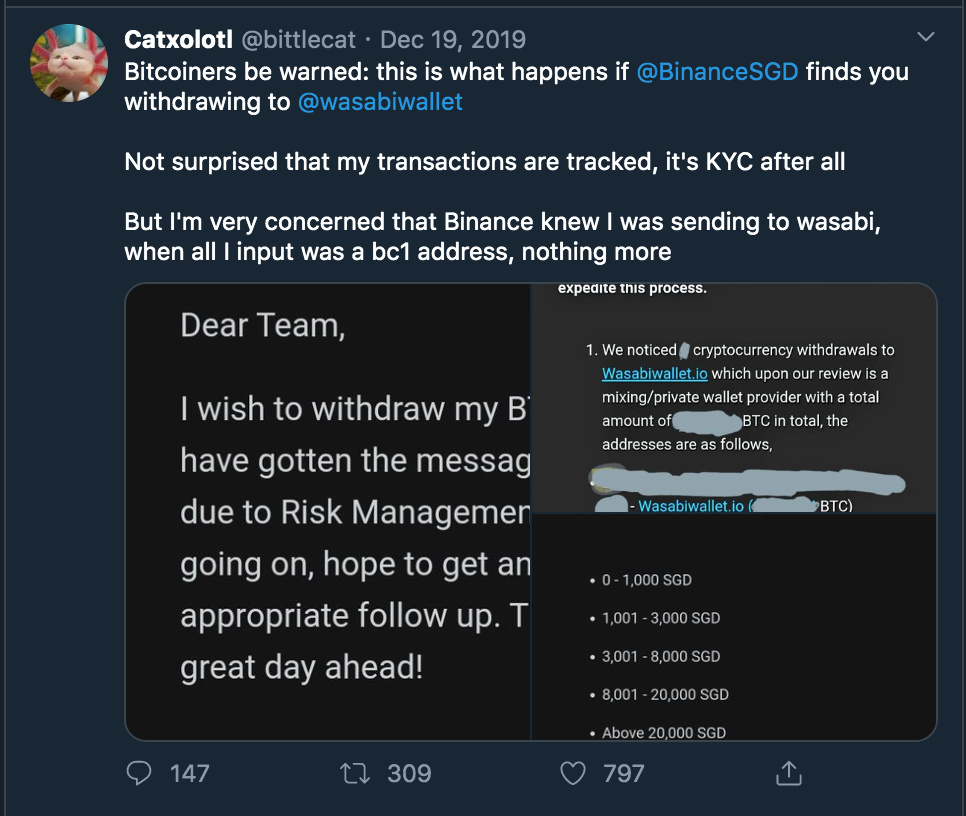
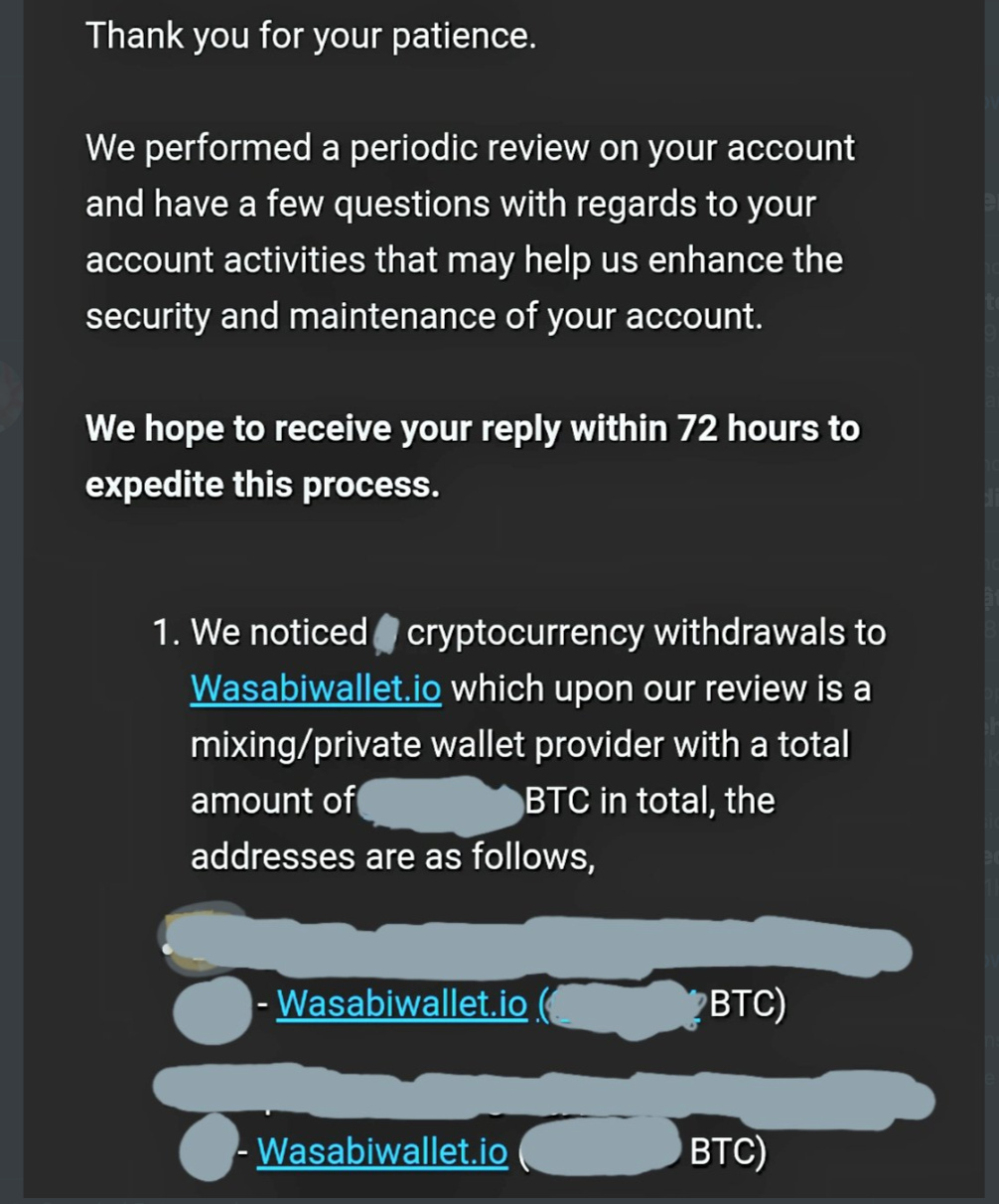
Back in December 2019, Catxolotl was trying to withdraw his funds from Binance Singapore to his Wasabi Wallet address, which is in bech32 address format (starting with bc1). For the record, Wasabi Wallet is a Bitcoin address that integrates Chaumian Coinjoin protocol for transaction hash mixing. When you use Wasabi Wallet, the BTC sending transaction from your wallet to your friend’s wallet will be scrambled with other sending transactions, giving no chance to any third party to trace up. There are many tools for scrambling BTC transactions out there, ranging from mobile wallets like Samourai Wallet or Wasabi Wallet to tumble transaction service sites like smartmixer.io or bitcoinmix.org to market for transaction mixers like JoinMarket.
Guess what? Binance refused to execute the withdrawing transactions for Catxolotl. “Not surprised that my transactions are tracked” - Catxolotl wrote on his Twitter page. The conspiracy theory is that Binance didn’t want their user to withdraw funds into Wasabi Wallet because the user can Coinjoin his funds from Wasabi Wallet address to his pwn safety box and the process gives no room for the exchange to watch.
The story didn’t end there. Another Binance user named Max Hillebrand was the next victim of Binance blockade, also back in December 2019.
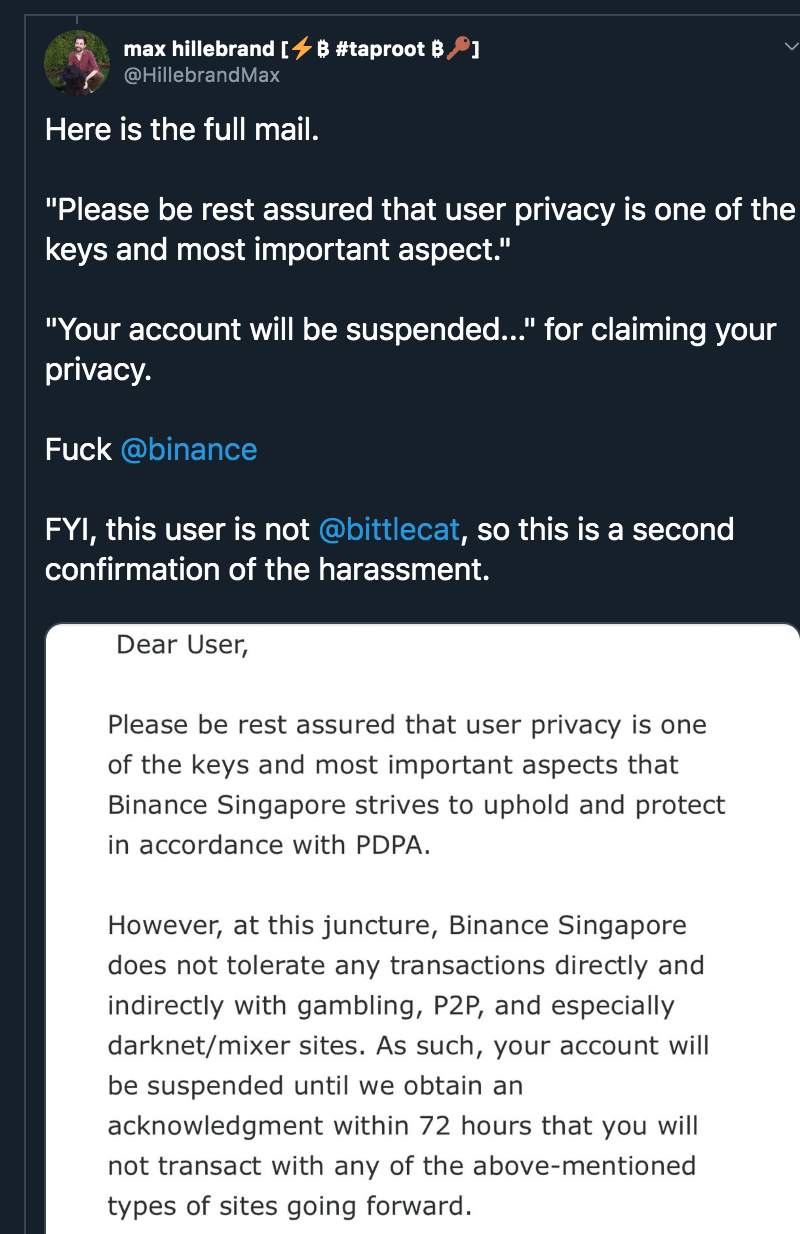
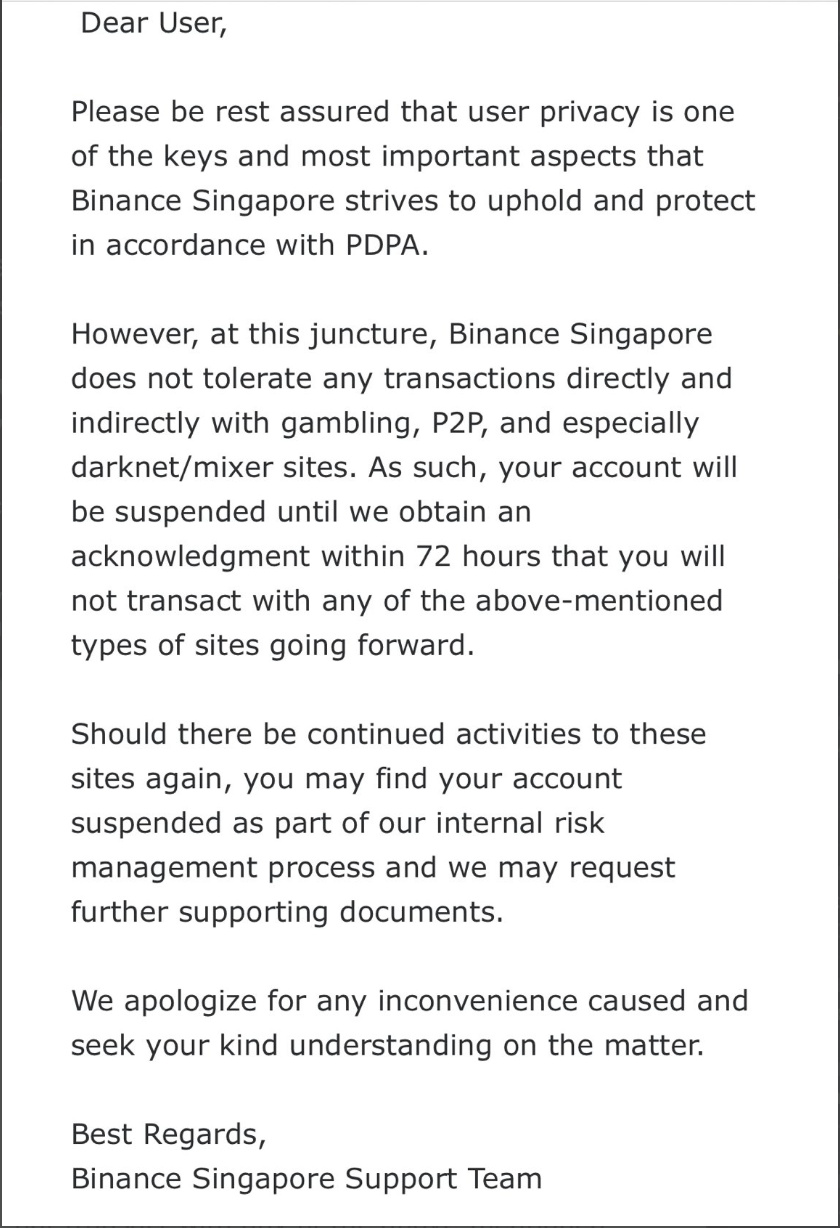
Max wanted to anonymize the BTC withdrawing transactions from Binance to his personal wallet with the little help from a mixer site. He, unfortunately, also didn’t get the nod from Binance.
It seems like third-party sites would love to give their baby-users a close watch. In the recent tweet in January 2020, Catxolotl also revealed another case of the blockade on another third-party website. The guy named Ronald did the same thing as Max did, which is sending his BTC from Paxos (basically is the site folks use to buy cryptos through their cash in banks) to a Bitcoin mixing service, and consequently got the same harsh shoulder-shrugging as his peer got.
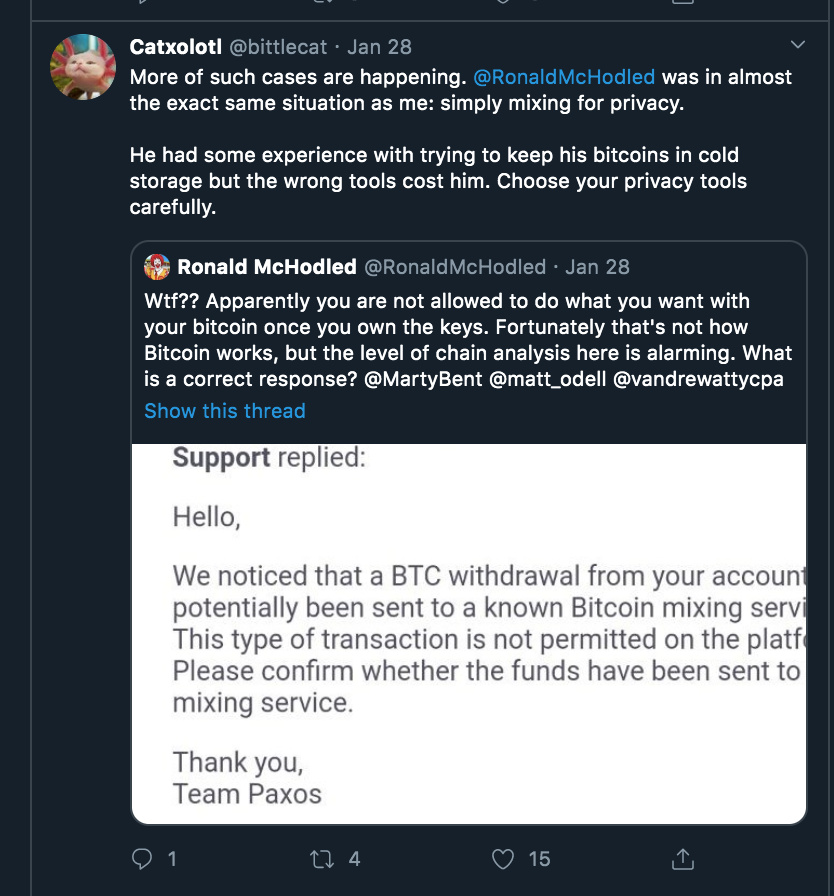
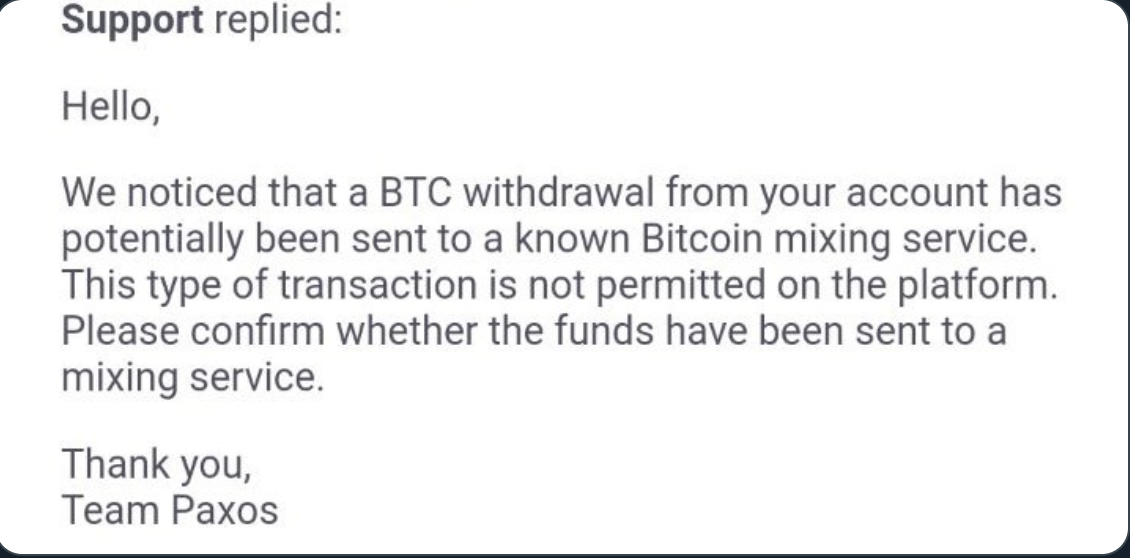
Anonymize BTC transactions: Rewind the past
As a matter of fact, the topic ‘how to anonymize BTC transactions’ has been discussed for quite a long time in the blockchain space, exactly since 2013. In the old-time bitcoinmagazine.com, prior to immersing himself in his own Ethereum, Vitalik showed his interest in this topic with his writing. Now, the demand to anonymize BTC transactions is more prevalent among Bitcoin maximalists who have been in the space for a few years. They believe that the ‘privacy mode’ is the missing piece to make Bitcoin the bestest crypto, the true combination of freedom and anonymity.
Gradually, when the industry witnessed the setting foot of more mass users and especially companies kowtowing to regulations, folks seemingly forgot the importance of their privacy when being on-chain. Third-party sites, since their operations are allowed by governments, also apply something called the Anti Money Laundering policy, which motivates them to detect clearly their users’ information, including real-life IDs and on-chain financial information. Now, It seems like lots of third-party crypto sites are merely hotbeds of blockchain-freedom violation.
For the users, the most important question now is that
’Is there any alternative options for Wasabi Wallet or Bitcoin tumbling services when it comes to depositing to and withdrawing from third-party sites without these sites knowing that their users are secretly anonymizing BTC transactions?'
Stop Coinjoining - Let’s turn your BTC into Privacy BTC with Incognito Wallet
When it comes to Coinjoining, third-party crypto sites can be aware that you are using such services and easily shutdown the use. Instead of mixing services, you can actually
use a new solution for anonymizing BTC transactions powered by Incognito Wallet named Privacy BTC (pBTC).
The core solution of ‘Privacy BTC’ is that you can turn your BTC into pBTC 1:1 back and forth in Incognito Wallet by trustless custodians. pBTC is a privacy cryptocurrency built on Incognito privacy chain. That’s why no one can trace up your pBTC transactions, when you send out pBTC to friends or receive pBTC from friends.
Simple walkthrough: How to withdraw BTC anonymously out of Binance?
Let’s see with Incognito Wallet, how can the guy Max mentioned above withdraw his BTC out of Binance without he using a mixing transaction service and the exchange knowing that Max is trying to secretly anonymize his BTC withdrawing activity.
Let’s say Max has 0.002 BTC in his Binance account. He wants to withdraw 0.001 BTC into his personal wallet but he doesn’t want Binance to have the Tx Hash(es) of the withdrawing transactions nor know exactly his on-chain personal wallet address.
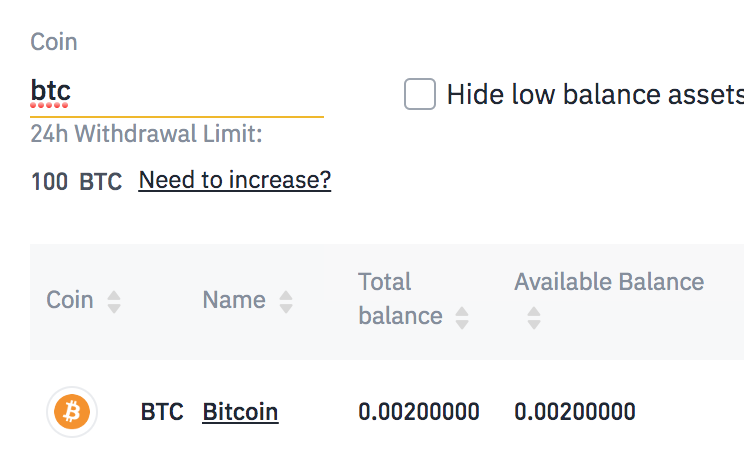
Max opens his Incognito Wallet, chooses “Privacy Bitcoin” and taps Deposit. Max only needs to send 0.001 BTC from his Binance account to this address below. As you can see, this address is merely a typical BTC address starting with 1…, which means Binance will see this withdrawing activity from Max as a normal one and uninvolved to any bitcoin mixing services.
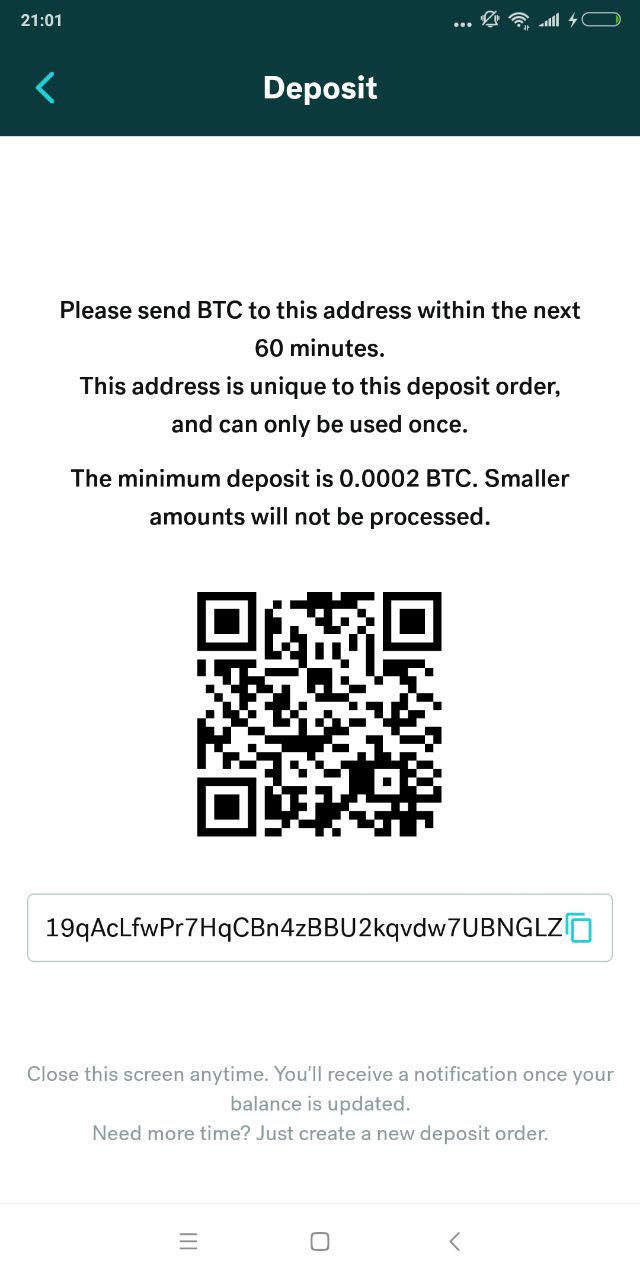
After sending 0.001 BTC, Mix will see 0.001 pBTC in his Incognito Wallet. He can also check out the Tx Hash issuing 0.001 pBTC here. Clearly, nothing is shown.
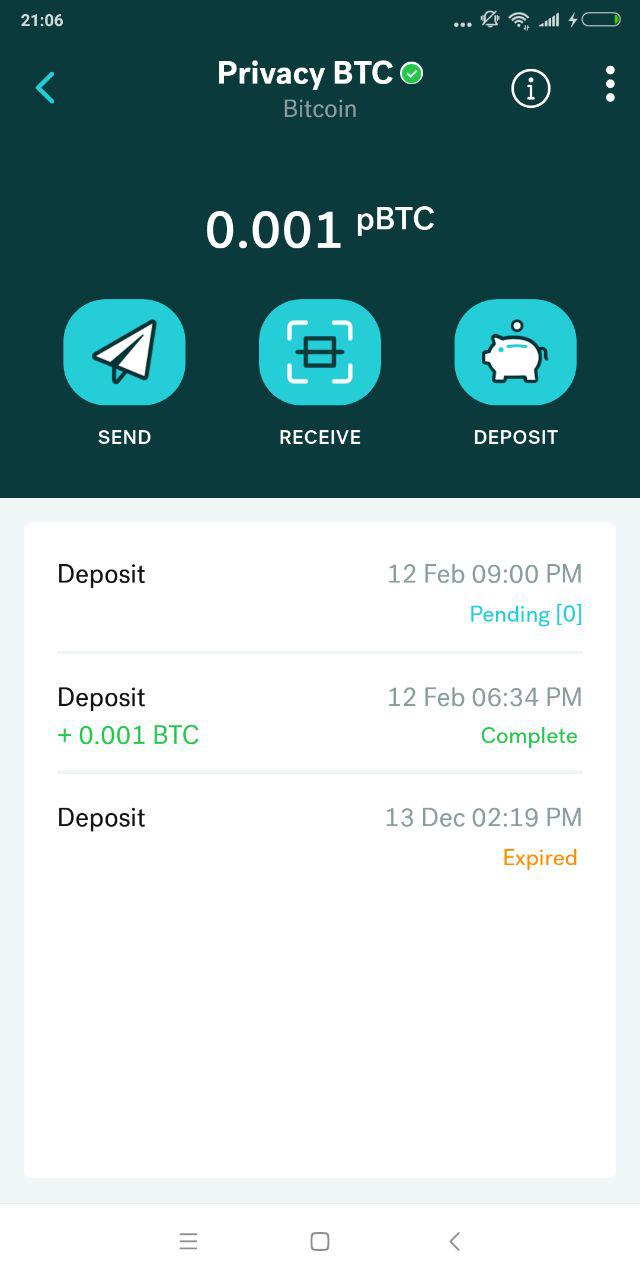
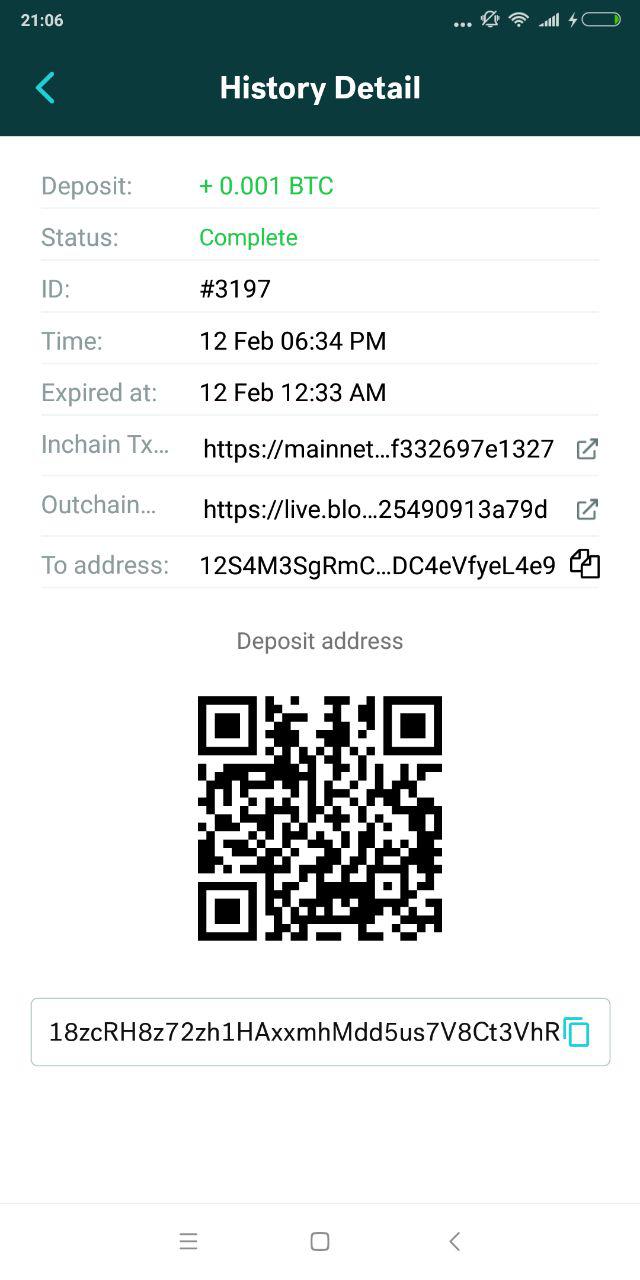
Now if Max wants to turn 0.001 pBTC into 0.001 BTC and send 0.001 BTC into his personal wallet, he taps into the three dots symbol at top right corner and chooses Withdraw. Here, he inputs his BTC personal wallet address and click Withdraw. 0.001 pBTC will be sent into his personal wallet as 0.001 BTC. Of course, he can also send this 0.001 pBTC to his friend’s Incognito wallet address. The pBTC sending transaction will be completely anonymous because it is executed on Incognito privacy chain.
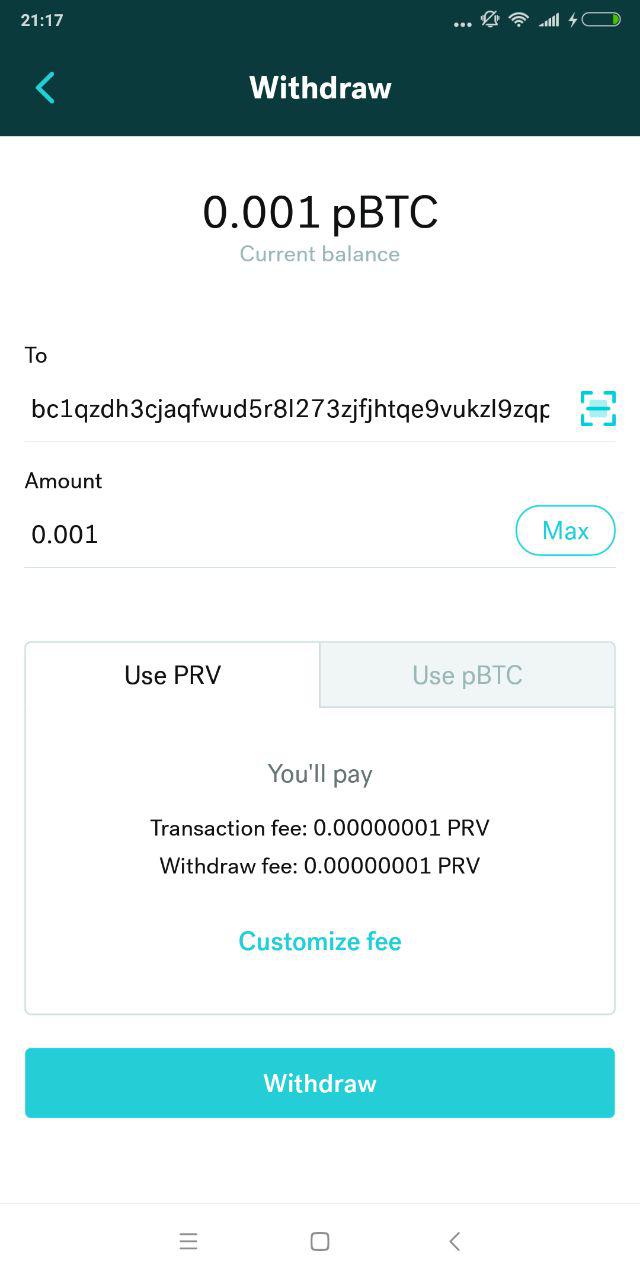
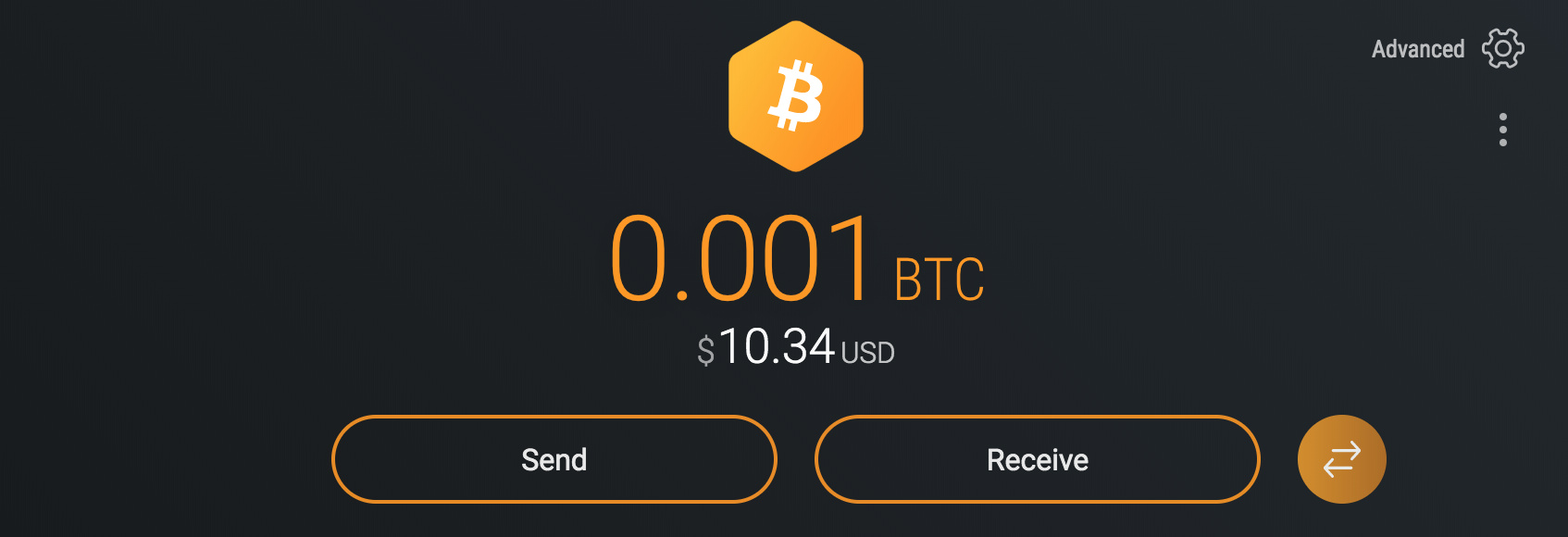
If Max goes through all steps of the process, there will be no one who can trace to his withdrawing Txs or his personal wallet address, even Binance or Incognito Wallet.
What do you think? Please tell us
That’s it. What do you think of the brand new & totally anonymous way to deposit to & withdraw from thrid-party crypto sites, for example, centralized exchanges? Let’s open the floor for discussion here!

